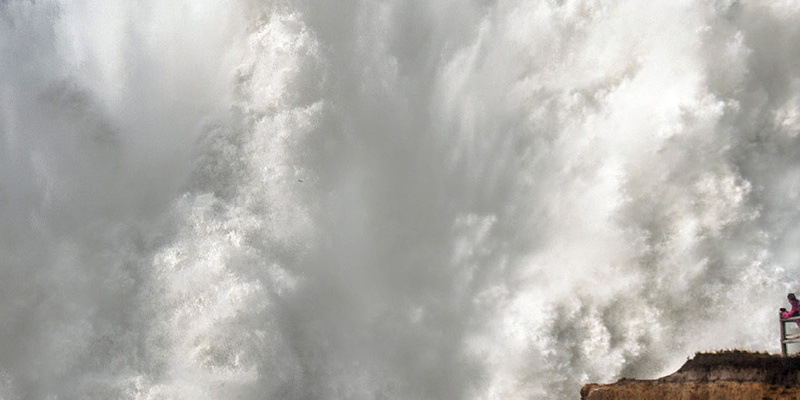By Kim Cooper Findling
In 1906, a shipbuilding magnate’s son purchased a piece of land south of Coos Bay, Oregon. It was a wild and untamed acreage perched on a rocky cliff above the ocean, forested with spruce and salal, with access to a secluded alcove beach. At this site Louis J. Simpson built a mansion as a Christmas present for his bride, Cassie, featuring a swimming pool, a ballroom and nine guestrooms. At the “country home” they dubbed Shoreacres, the Simpsons would summer. As if the incredible natural beauty of the place wasn’t enough, the Simpsons also installed formal English botanical gardens on their estate.
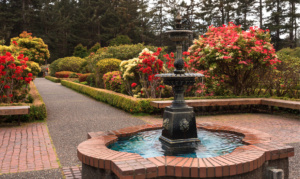
Eventually, Simpson bought all the land from Sunset Bay to Cape Arago, and the family moved to Shoreacres full time in 1915. But hard times were ahead, beginning with Cassie’s death and a devastating fire that destroyed the mansion in 1921. Simpson rebuilt a home grander still, which later fell into disrepair and was torn down in 1948.
By then, Simpson—the forward-thinking, civic-minded founder and five-time mayor of North Bend—had partly donated, partly sold his estate to the state of Oregon, to be forever protected. Today, this place is Shore Acres State Park (with the spelling slightly altered to two words).
In the 1970s, the remains of the formal garden commanded the attention of the state parks landscape architects. The architects entirely redesigned and replanted the gardens to draw inspiration and pay homage to Simpson’s original vision. “The garden mimics the style of the historic estate,” said park ranger Rider Frey during a garden tour. “It’s far more extravagant now.”
The Formal Garden
In a formal garden, geometric shapes define the layout, bordered by small hedges (at Shore Acres, these are boxwood). All paths lead to a focal point (here, it is the pond). Plantings are mirrored on each side of the path to provide a sense of balance as one passes through. Native species are eschewed. The plantings are exotics from around the globe. The garden beckons as a place to visit year-round. Something should always be happening for a visitor to witness, no matter the season.
At Shore Acres, this is all true. Even a late-winter visit is pleasing and might include some early spring bulbs blooming. In don’t-miss December, a lack of botanical bounty yields way to hundreds of holiday lights to delight nighttime guests. Late spring and summer are prime times to visit, when the garden is alive with “carpets and blankets of blooms,” said Frey. The many varieties of rhododendron and azalea are in full display, revealing colors of red, purple and orange.
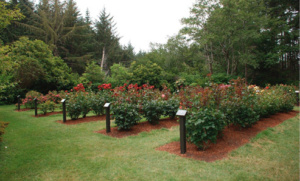
The roses are just starting up, including the few remaining Simpson-era plants at the garden entrance, as well as those in the All America Rose Selection display garden tucked at the back of the garden boundaries. Leopard lily and tiger lily have popped up, as have the bright red hino crimson azalea and lemon bottlebrush, stalks of bear’s breeches and purple blooms of hebe ceanothus. Trees make an appearance, too, including as definition of the garden’s outer edges. A royal crown magnolia blooms twice a year.
Global Species
True to the formal garden ideals, species planted here hail from around the globe, including Asia, North America, Europe and South America. Several native species have established themselves here. These include a huge Sitka spruce, which towers over the only remaining original building on site—the former gardener’s house. A Monterey cypress and a Monterey pine, both native to California, were planted during the Simpson era. The latter is notably the largest of its kind in Oregon.
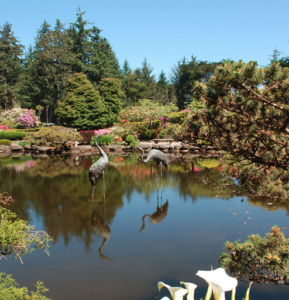
The lily pond at the center of the Japanese-style garden is the focal point. Japanese varieties surround a small body of water dotted with sculptures. Simpson’s secluded beach is still here, too—visitors descend a short, steep path to Simpson Beach. Tucked out of the wind with tidepools, cliff views and wild waves, it’s great for a family afternoon of exploration and picnicking. The most famous view—that which becomes the annual obsession of amateur and professional photographers alike—is from the site of Simpson’s first mansion, out on the bluff. From here, visitors witness crashing waves hitting dramatic cliffs to send water flying into the sky.
Shore Acres remains secluded. Although it is one of the most treasured state parks in Oregon, the out-of-the-way location makes the place feel like a surprise. “I tell people, drive past Charleston, keep going past any houses, and when you are sure you’re in the middle of nowhere, you’ll come across a formal botanical garden,” said Frey.
The park is so remote that the place is still in some ways as wild and untamed as during Louis Simpson’s tenure. During the pandemic shutdowns, when the botanical gardens saw no visitors for months, an otter took up residence in the lily pond. The rangers named him Louie. See shoreacres.net.
Visit More Botanical Gardens in the West:
Butchart Gardens
Victoria BC, Canada
Victoria’s grande dame garden still glows after going-on 120 years. From its modest start as a limestone quarry, the garden has grown to encompass millions of bedding plants in more than 900 varieties, beautifying gardens in different themes, from Mediterranean to Italian to the five-acre Sunken Garden at the heart of it all. See butchartgardens.com.
Sonoma Botanical Garden
Sonoma, CA
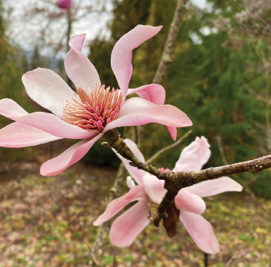
A lily magnolia in bloom at the Sonoma Botanical Garden in California
The Sonoma Botanical Garden devotes itself to environmental education and conservation. Many mature flowering Asian trees and shrubs found here are rare and endangered varieties. They enliven over twenty-five acres, interspersed with waterfalls, ponds and views of Sonoma Valley below. Planned for the future is the twenty-two-acre Three Springs Ranch, where California native plants will be protected in a “living museum.” See sonomabg.org.
Bellevue Botanical Garden
Bellevue, WA
Created as a garden in the woods and a retreat from urban life, the Bellevue Botanical Garden comprises several themed gardens. Take a 150-foot suspension bridge into the heart of the forest for the Ravine Experience. Visit the award-winning Waterwise Garden to discover practices and plantings that conserve water, lower chemical use and preserve habitat. Then make sure to visit the tiny wildflowers of the Rock Garden. See bellevuebotanical.org.
Japanese Friendship Garden
Idaho Falls, ID
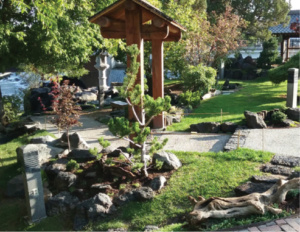
The Japanese Friendship Garden in Idaho Falls honors the sister city, Tokai-Mura, Japan.
Positioned on an island on the Snake River, as part of the Idaho Greenbelt, the Japanese Friendship Garden and Japanese Pavilion were installed to honor Idaho Falls’ Sister City, Tokai-Mura, Japan. The botanical gardens began with the donation of a large lantern from the Tokai-Mura residents. They are a true labor of love for the community of Idaho Falls, a quiet oasis and peaceful retreat in the middle of the city. See japanesepavilion.org.
Plan Your Botanical Garden Road Trip
Road trips like these are in AAA’s DNA, and we’d love to help you plan your next one!
Build a TripTik | Maps & Directions | Contact a AAA Travel Agent | Get Ready for the Road


